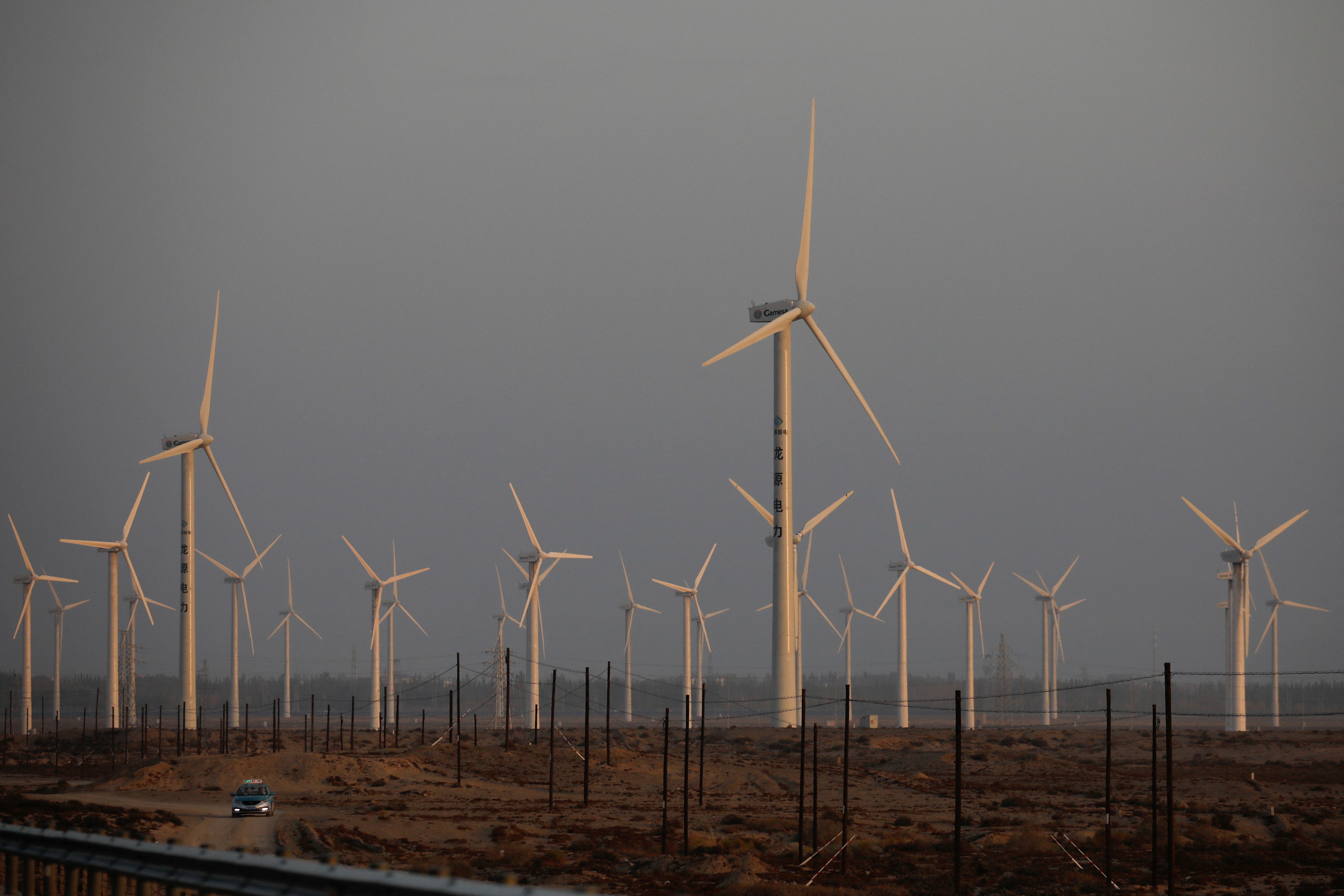BEIJING, Jan 28 (Reuters) - Non-fossil fuel energy sources such as wind, nuclear, solar and hydropower may make up half of China's total power generation capacity by the end of 2022, for the first time ever, the country's electricity council has forecast.
China, the world's biggest greenhouse gases emitter and coal consumer, is expected to add 180 gigawatts (GW) of new power generation capacity from non-fossil fuel sources during 2022, driving total non-fossil fuel capacity to 1,300 GW, according to a report issued by the China Electricity Council (CEC) late on Thursday.
That equates to half of the CEC's forecast of total installed power generation capacity in China of 2,600 GW by the end of 2022, of which 1,140 GW would be coal-fired power capacity, the report said.
China has pledged to "control" coal consumption in the 2021-2025 period and bring total wind and solar capacity to at least 1,200 GW by the end of this decade in order to cap carbon emissions by around 2030 and reach a carbon neutrality by 2060.
The CEC earlier this month said that China's power industry, which causes about 41% of the country's total carbon emissions, could aim to cap its carbon emissions by 2028.
In Thursday's report, the council also forecasted China's electricity consumption in 2022 will increase by 5%-6% from a year earlier, reaching 8.7 trillion to 8.8 trillion kilowatt-hours.
"(We) expect the electricity supply and demand situation in 2022 to be generally balanced across the country. But some regions could see power crunch during peak demand hours in summer and winter season," the CEC said.
More than half of Chinese regions suffered from a months-long power shortage in 2021, partly because of low hydropower generation and insufficient coal supply.
Our Standards: The Thomson Reuters Trust Principles.


